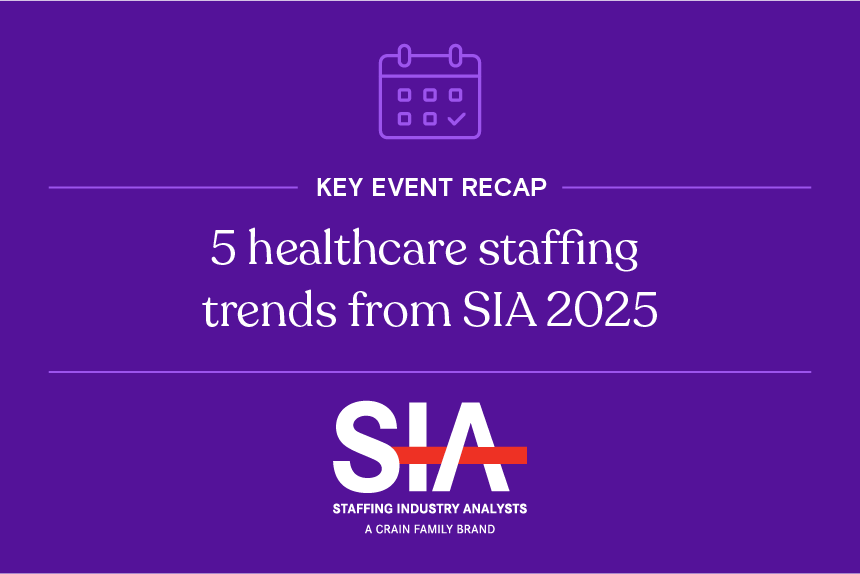Bad debt is a chronic issue for hospitals and other healthcare providers. When hospitals can’t collect out-of-pocket payments from patients, those uncollected funds can have a negative impact on providers’ bottom line, especially for small and rural providers.
To help offset these costs, Medicare reimburses hospitals and other healthcare facilities for some of the bad debt owed by its beneficiaries. But it doesn’t pay for all the bad debt providers incur. Under current law, Medicare reimburses eligible healthcare facilities only 65% of allowable bad debt.
Here’s a look at more facts and figures related to hospital bad debt.
1. The definition of bad debt changed in 2018
Prior to 2018, hospitals could report bad debt as the difference between what was billed to patients and the amount patients actually paid, regardless of whether the hospital ever anticipated receiving the full amount.
Under the current standard, hospitals are only able to report bad debt when extenuating circumstances – such as unemployment or bankruptcy – prevent patients from paying an issued medical bill.
This standard could impact how hospitals report community benefits spending to the IRS. Many hospitals include bad debt as part of charity care spending and payment shortfalls from Medicare and Medicaid. The changes could also shift how non-profit hospitals justify their tax-exempt status, as bad debt is an indicator of not-for-profit status.
Currently, there are more than 3,900 active nonprofit hospitals in the U.S. – almost half of all active hospitals.
2. Most U.S. adults have faced medical debt
Most Americans have faced healthcare debt. According to the Kaiser Family Foundation, 57% of U.S. adults owed healthcare debt in the past five years, and 4 in 10 currently have debt due to medical or dental bills.
Women and people of color are more likely to have healthcare debt. In 2022, more women (48%) reported having medical debt than men (34%), and more Black (56%) and Hispanic (50%) adults said they had debt, compared to fewer white adults (37%).
Unsurprisingly, lower-income households are more likely to have healthcare debt, but it’s not uncommon among those with higher incomes (26% of adults in households earning $90,000 or more). Many hospitals are struggling to find a solution to recuperate costs.
3. Most hospital bad debt is associated with insured patients
Bad debt is on the rise, and it’s not just uninsured patients who are struggling to pay. According to public accounting firm Crowe, self-pay after insurance accounted for nearly 58% of bad debt in 2021, compared with only 11% in 2018. The rise of high-deductible health plans and higher out-of-pocket medical expenses are a few factors driving this trend.
The problem is compounded by soaring balances, too. The proportion of patient statements with balances over $7,500 has more than tripled since 2018, to nearly 18%. In 2018, only 5% of patient statements had balances exceeding $7,500. High balances are more difficult for patients to pay, and thus hospitals are less likely to collect on them. This trend is a major concern for both patients and healthcare providers.
4. Nearly 1 in 3 hospitals report over $10M in bad debt
Hospitals reported more than $50 billion total in bad debt, based on figures from about 4,400 hospitals in our database. And nearly 30% of hospitals reported more than $10 million in bad debt, highlighting a significant financial burden on many hospitals. Below, we list the hospitals and health systems with the most bad debt.
Number of hospitals by bad debt range
| Bad debt range | Number of hospitals |
| 10M | 2,994 |
| 10M - 50M | 1,224 |
| 50M - 100M | 142 |
| 100M - 250M | 43 |
| >250M | 4 |
Fig. 1 - Data is from the Definitive Healthcare HospitalView product. Accessed September 2025.
Top 5 hospitals reporting the most bad debt
| Hospital | HQ state | Bad debt |
| Parkland Health | TX | $382,188,672 |
| Jackson Memorial Hospital | FL | $346,712,224 |
| Grady Health System | GA | $300,360,192 |
| South Texas Health System Edinburg | TX | $293,343,232 |
| Baptist Medical Center | TX | $245,597,728 |
Fig. 2 - Data is from the Definitive Healthcare HospitalView product. Accessed September 2025.
Top 5 health systems reporting the most bad debt
| Health system | HQ state | Bad debt |
| HCA Healthcare | TN | $2,660,531,549 |
| CommonSpirit Health | IL | $1,492,584,471 |
| Universal Health Services | PA | $1,448,134,093 |
| Advocate Health | NC | $1,317,115,709 |
| Tenet Healthcare | TX | $959,847,201 |
Fig. 3 - Data is from the Definitive Healthcare HospitalView product. Accessed September 2025.
5. Less than half of Americans budget for healthcare expenses
Only 46% of Americans budget $50 or more per month for healthcare-related expenses, according to Amino. Instead, Americans are saving that money for food (79%), transportation (59%), and debt repayment (49%). Of the 54% of Americans who do budget for healthcare, one-third put the funds toward doctor visits, 28% toward prescriptions, and 28% toward insurance premiums.
Reducing emergency room bad debt
Reducing bad debt in emergency departments starts with educating patients. Often, patients are unsure of what constitutes an emergency room visit rather than an urgent care visit. Many healthcare providers are using telehealth to reduce emergency department wait times and reduce resources spent on non-emergency cases. Minimizing the number of patients who seek costly emergency care can lower the number of uncompensated care visits.
Additionally, providers in emergency rooms can normalize having conversations with patients about care costs and payments. This can include discussing insurance coverage for different treatments as well as a check-out experience that encompasses payment options.
In many cases, patients accrue unforeseen medical debt when payors charge for out-of-network providers. For some, this occurs while a patient is unable to choose the provider or treatment they prefer.
One example is when a patient has a heart attack in a public setting, and a bystander calls an ambulance. The patient, who may not have been able to consent, would be on the hook for the cost of the ambulance ride and the care provided en route to the hospital.
This proactive approach to care delivery is vital to provide fast, life-saving care. It may also mean that patients find themselves saddled with thousands of dollars in medical debt for treatment that they didn’t opt to receive.
Learn more
To learn more about how hospital bad debt and other quality metrics impact selling to care facilities, watch our on-demand webinar: Selling to doctors in the fast-growing outpatient market.
In this webinar, you will learn:
- To identify sales opportunities in the ambulatory care market
- How traditionally inpatient acute care specialties are shifting
- The ways payment reforms, technology, and patient sentiment are driving care to the outpatient setting
- To target key physician influencers across networks
Or if you’re looking for more hospital financial metrics to guide your healthcare commercialization strategy, start a free trial today.





